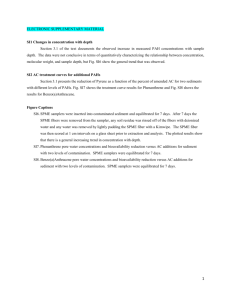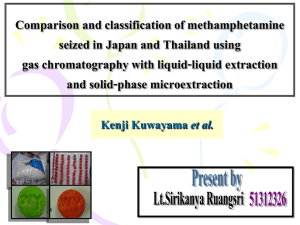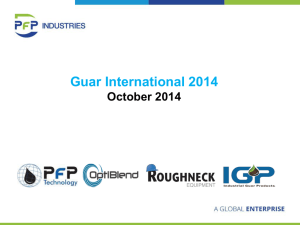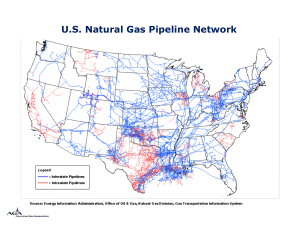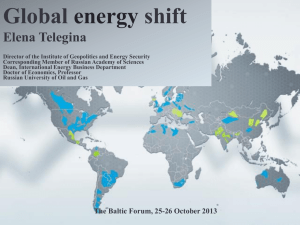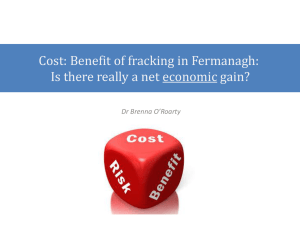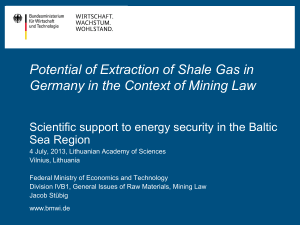Traditional methods vs. innovative SPME
advertisement
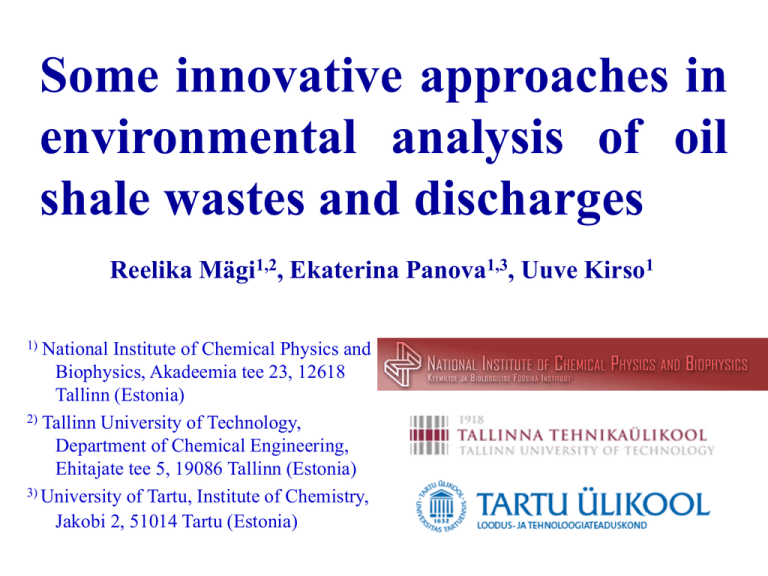
Some innovative approaches in environmental analysis of oil shale wastes and discharges Reelika Mägi1,2, Ekaterina Panova1,3, Uuve Kirso1 1) National Institute of Chemical Physics and Biophysics, Akadeemia tee 23, 12618 Tallinn (Estonia) 2) Tallinn University of Technology, Department of Chemical Engineering, Ehitajate tee 5, 19086 Tallinn (Estonia) 3) University of Tartu, Institute of Chemistry, Jakobi 2, 51014 Tartu (Estonia) Outlines 1. Traditional analysis of pollutants 2. SPME What is it? How it works? 3. Traditional methods vs. innovative SPME 4. Application of SPME to leachate analysis of oil shale processing waste 5. Conclusions Emission sources of pollutants Achten and Hofmann, Science of the Total Environment (2009) 2461-2473 doi:10.1016/j.scitotenv.2008.12.008 The analysis of organic contaminants in air, water and soil has become more and more important due to increasing environmental concerns. The development of simple, efficient and inexpensive analytical methods are crucial for environmental monitoring. Solid phase microextraction (SPME) What is it? King et al., Environmental Geochemistry and Health 25: 69–75, 2003. SPME How it works? Desorption Polycyclic aromatic hydrocarbons (PAHs) or other analyte of interest Sample (oil shale wastewater, soil, sludge or other) http://www.sigmaaldrich.com/analytical-chromatography/video/spme-video.html Outlines 1. 2. 3. 4. 4. 5. 5. Traditional analysis of pollutants SPME What is it? How it works? Traditional methods vs. innovative Traditional methods vs. SPME innovative SPME Application Application of of SPME SPME to to leachate leachate analysis shale processing waste analysis oil of oil shale processing waste Conclusions Conclusions Conventional methods vs. SPME (1) Sampling Extraction Preconcentration Chromatographic introduction technique Time consuming Laborious SPME is a combination of multistep traditional techniques Fast (can be done in minutes) Simple Conventional approach vs. SPME (2) High amount of solvents Solvent free technology. and other chemicals is The same fiber can be needed. used 50-100 times. Most of solvents are toxic. Fiber can be directly Solvents selection transferred to GC influences on injector. chromatogram. Expensive Low cost Toxic Non toxic Conventional approach vs. SPME (3) Removes analytes of interest from the sample. Can deteriorate the sample. Sample volume is big. Risk to the environment Analyte removed by the fiber proportional to the concentration of the compound in the sample. Minimized disturbance of sample matrices. Sample volume is small. Environmental-friendly Application of SPME on field studies On-site analysis Screening purposes On-site sampling of river water using the thin film sampler (Qin et al., Journal of chromatography A, 1216 (2009) 6979-6985) Outlines 1. 1. Traditional Traditional analysis analysis of of pollutants pollutants 2. 2. SPME SPME What What is is it? it? How How itit works? works? 3. 3. Traditional Traditional methods methods vs. vs. innovative innovative SPME SPME 4. 4. Application ApplicationofofSPME SPMEtotoleachate leachate analysis analysisof ofoil oilshale shaleprocessing processing waste waste 5. 5. Conclusions Conclusions Schematic sampling sites on spent shale deposits Adapted from “Eesti põhjavee kasutamine ja kaitse”, 2004 L.Allikas Optimization of PAHs analysis method in oil shale waste leachate Extraction time profile for the peak areas of PAHs Extraction temperature profile for the peak area of PAHs 6.E+04 Peak area Peak area 5.E+04 5.E+04 Napthalene Acenaphthylene Fluoranthene Pyrene Acenaphthene 4.E+04 4.E+04 3.E+04 3.E+04 2.E+04 2.E+04 Fluoranthene 1.E+04 1.E+04 1. Sample volume 2. Type of the fiber 3. Time of extraction 4. Temperature 5. Stirring speed 0.E+00 0.E+00 00 20 20 40 40 60 60 Time, minOC Temperature, 8080 100100 Examples of PAHs analysis in oil shale waste leachate Phenantrene Acenaphthene Phenantrene Fluorene Fluorene Fluoranthene Naphthalene Acenaphthene Pyrene Conclusions The proposed method can be recommended for leachate analysis of oil shale waste because it is: Simple Fast Environmental-friendly Sensitive Reliable Cheap Thank you for your attention! Tänan tähelepanu eest! Спасибо за внимание!
